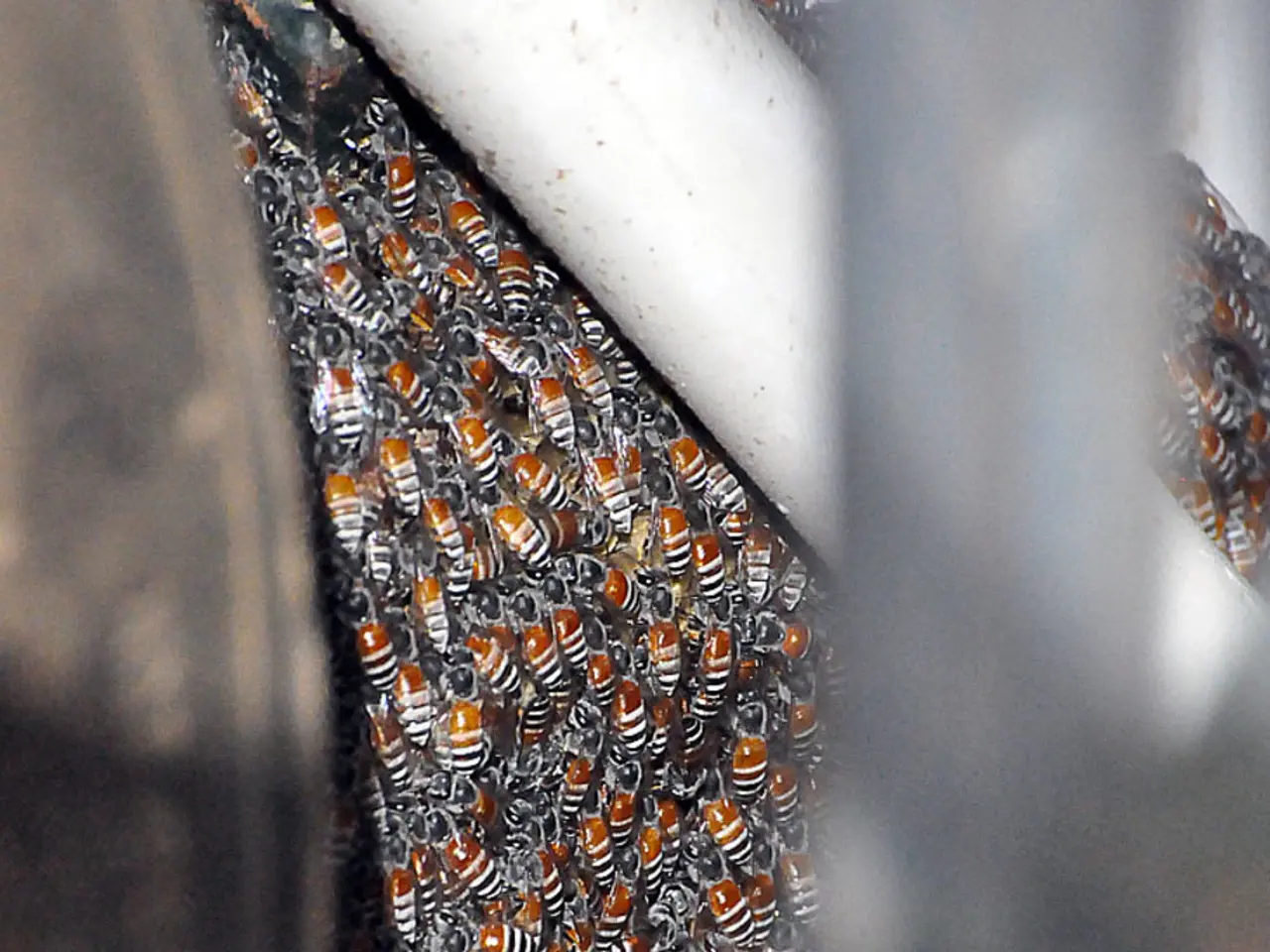Plastic Pollution in France: Uncovering the Alarming Presence of Microplastics in Three-Quarters of Soil Samples!
In a concerning development, a recent study has revealed that microplastics, tiny plastic particles less than 5mm in size, are pervasive in French soil, with approximately 76% of samples tested showing traces of microplastic pollution[1]. This finding underscores the urgent need for research to evaluate the impact of microplastics on environmental systems and public health.
The presence of microplastics in soil raises concerns about environmental contamination and agricultural productivity. Soil ecosystems, which are essential for nutrient cycling and plant growth, can be disrupted by microplastics. They can alter soil structure, reduce soil fertility, and affect microbial communities that are vital for these processes[1][2]. Furthermore, microplastics can leach into water bodies through runoff, potentially contaminating rivers and affecting aquatic life[3].
The health implications of microplastics are also a cause for concern. Microplastics can be ingested by a wide range of organisms in ecosystems, including humans, via contaminated food grown in these soils. Understanding the long-term consequences of microplastics is important as they continue to permeate natural resources. Comprehensive studies are needed to assess the implications of microplastics on human health through pathways like drinking water and food consumption[4].
A recent study collected 33 soil samples from various locations in France, finding that 25 of them contained traces of microplastic pollution[1]. This initial investigation provides a baseline understanding of microplastic contamination in French soils but highlights the need for further research. Landfill sites contribute to microplastic contamination in soil through degrading plastic waste, while agricultural practices using plastics-contaminated organic materials for fertilization also lead to microplastic infiltration in soils[2].
Wastewater treatment plants unintentionally release microplastics during processing, further exacerbating the problem[4]. Forest soils had fewer affected areas compared to grassland soils, which were entirely contaminated in all tested samples[1]. This suggests that grasslands, which are critical to food production, may be more vulnerable to microplastic contamination.
The UCplastic Project, funded by the French National Research Agency (ANR), is studying the impact of microplastics on ulcerative colitis, highlighting the need for detailed health assessments[3]. Research should inform policy to reduce plastic production and implement effective waste management strategies to mitigate microplastic pollution in soils[5].
The French Agency for Food, Environmental and Occupational Health and Safety (ANSES) is involved in various projects to assess microplastic contamination and its impacts[3]. International collaboration is crucial for harmonizing research protocols and sharing findings to address this global issue[3][5].
In conclusion, urgent research into the impacts of microplastics in French soils is necessary to address both environmental degradation and potential health risks. This research should guide policy changes aimed at reducing plastic production and improving waste management practices. By addressing this issue, we can safeguard our environment and public health for future generations.
References: [1] Le Monde, 2021. Les microplastiques dans le sol français : la contamination est large. [Online]. Available: https://www.lemonde.fr/planete/article/2021/05/12/les-microplastiques-dans-le-sol-francais-la-contamination-est-large_6074223_3244.html [2] European Commission, 2021. Microplastics in the Environment. [Online]. Available: https://ec.europa.eu/environment/chemicals/microplastics/index_en.htm [3] ANR, 2021. UCplastic : un projet visant à comprendre les impacts des microplastiques sur les maladies inflammatoires intestinales. [Online]. Available: https://www.anr.fr/Projets/P18_0111 [4] ANSES, 2021. Microplastics. [Online]. Available: https://www.anses.fr/fr/actualites/microplastics [5] European Parliament, 2021. Microplastics. [Online]. Available: https://www.europarl.europa.eu/RegData/etudes/STUD/2020/660592/EXPO_STU(2020)660592_EN.pdf
- To address the health and environmental risks associated with microplastics, research should focus on their impact on soil ecosystems, nutrient cycling, plant growth, and microbial communities, as well as their potential contamination of food and drinking water sources.
- Science and environmental science communities must collaborate to study the health implications of microplastics, particularly in relation to fitness and exercise, food consumption, and the long-term consequences for public health, including the development of diseases like ulcerative colitis.
- The environmental science of microplastic pollution demands investigations into the various sources of contamination, such as landfill sites, agricultural practices, and wastewater treatment plants, in order to implement effective waste management strategies and reduce plastic production.
- In response to the global issue of microplastics, it is crucial for countries like France to establish partnerships and share research findings, as well as develop policies that encourage sustainable practices, mitigate microplastic pollution, and safeguard both the environment and public health for future generations.





